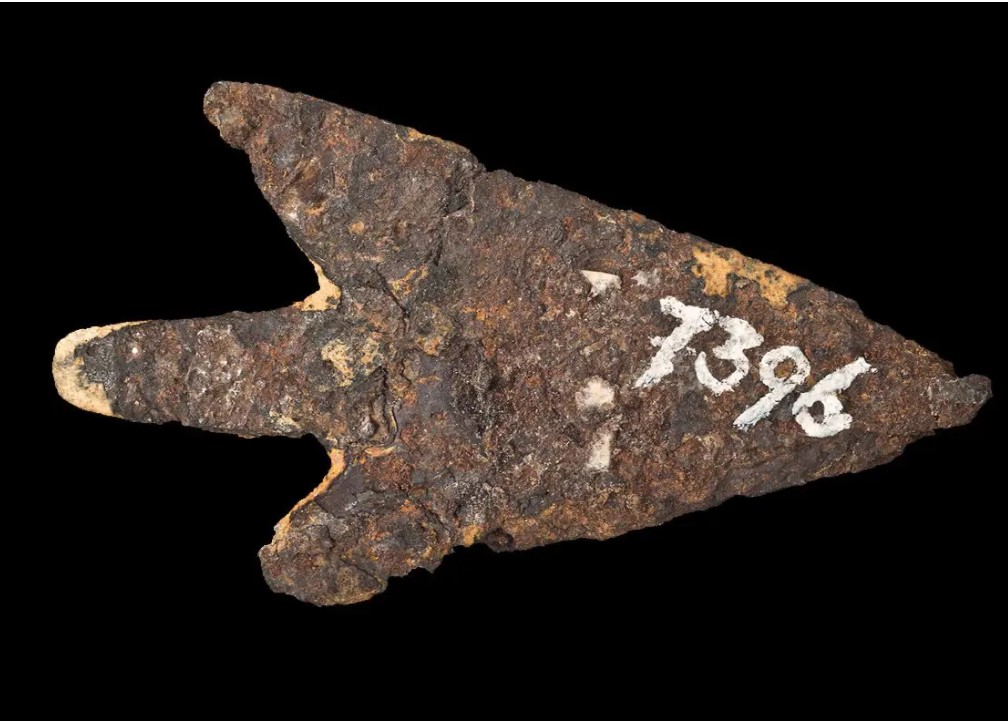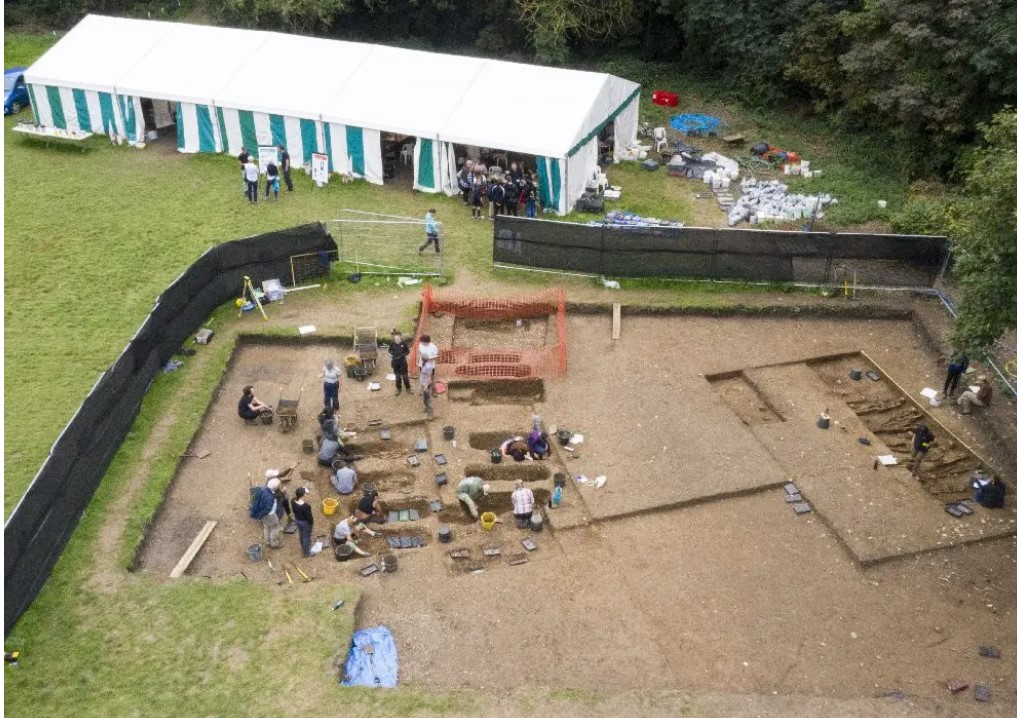Bronze Age Arrowhead Crafted from Meteoritic Iron Unearthed in Switzerland
In an exciting revelation, a recent study of archaeological collections from the greater area of Lake Biel in Switzerland has uncovered an extraordinary Bronze Age artefact—a meteoritic iron arrowhead housed in the Bern History Museum. This unique find sheds light on the ancient metallurgical practices and possible trade networks in Central Europe during the late Bronze Age.
The arrowhead, discovered during a 19th-century excavation of a stilt house settlement at Mörigen in the canton of Bern, dates back to around 900 to 800 BC. The settlement was inhabited by people from the Urnfield culture, a prominent late Bronze Age civilization in Central Europe.
The Mörigen site came to light in 1843 when the water levels in Lake Biel receded, revealing traces of the ancient settlement. Regrettably, amateur excavations took some artifacts out of their original context, eventually finding their way into private collections. In 1873, the Bernese government took decisive action to protect the site, prohibiting further private excavations and initiating a comprehensive research effort led by Edward Jenner and Edmund Fellberg. The thorough survey revealed a sprawling settlement covering 190 by 120 meters, boasting evidence of buildings, bridges, and a wealth of Bronze Age artifacts.
A study published in the journal Science Directs employed advanced scientific techniques such as gamma spectrometry, X-ray fluorescence, and a Muon Induced X-ray Emission (MIXE) analysis to reveal the remarkable composition of the arrowhead from the Mörigen settlement—it was crafted from IAB meteoritic iron.
The analysis showcased the presence of Aluminium-26 (26Al, Al-26), a radioactive isotope found solely in extraterrestrial objects, confirming the meteoritic origin of the arrowhead. Additionally, besides the typical meteoritic elements Fe, Ni, Co, Ga, and Ge, relatively high concentrations of As and Cu were detected, which are not common in iron meteorites.
UNVEILING HISTORY: RARE ROMAN STEELYARD BEAM FOUND AT HADRIAN’S WALL
Upon comparing the chemical composition, researchers propose that the arrowhead’s material originated from the Kaalijarv meteorite—an impact event that occurred around 1,500 BC in Estonia, resulting in numerous small fragments.
The findings hint at the possibility of an iron meteorite trade network in Central Europe as early as 800 BC or even earlier. This trade network could have possibly utilized the same routes used for amber trade from the Baltic area.
This exceptional discovery of a Bronze Age arrowhead made from meteoritic iron enriches our understanding of ancient metallurgy, trade connections, and the remarkable skills of early European civilizations. As researchers continue to unlock the secrets of the past, this discovery stands as a testament to the interwoven complexities of human history and the awe-inspiring connections between civilizations and the cosmos.
Header Image Credit : Science Directs




